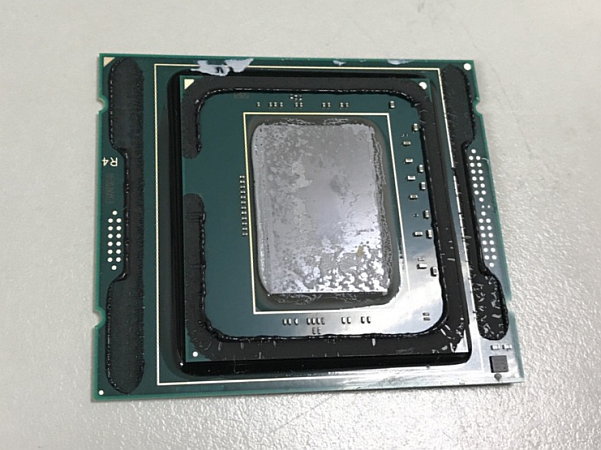The life blood of any engineer: sweet sweet documentation.
Unless it's just bizarrely wrong. And that's the case that I dug up on Intel's website with a link to the Skylake X series data sheet (volume 1, in volume 2 I hear they kill Bill).
This document has a juicy sounding title but when you read it you rapidly realize that while it says "Skylake X" a whole bunch of the content is clearly copy-n-pasted directly from Broadwell's datasheet without updates while simultaneously sprinkling in mentions of Skylake X.... BAD INTEL! NO DOCUMENTATION AWARD FOR YOU! Maybe they were hacked, or maybe they posted that as a joke.
Anyhoo, the reason I cared was that I wanted to get the dimensions of an LGA-2066 package so I could get my first estimate of the small (12 core) Skylake X die size. I'm assuming (always a dangerous thing) that the information in section 1.6 at the top of page 13 is correct:
The processor socket type is noted as LGA2066. The processor package is a 52.5 x 45 mm FC-LGA package.
If you are wondering, that's suspiciously similar (as in exactly the same) to LGA-2011. Not impossible considering 55 contacts don't take up that much space and LGA-2066 is clearly not radically different in size from LGA-2011. However, it's a caveat that if those numbers are wrong it will impact the accuracy of the analysis.
Phase 2: get a halfway decent picture of a delidded Skylake X with the package.
This one comes to use courtesy of HardwareLux.de concerning a guy named der8auer who makes delidding kits.
Reproduced here:

If anybody's wondering, that's regular thermal paste. For my purposes the only problem I have is they didn't clean it off, but we'll see what we can do with estimating a die size. Furthermore, this image is at far from a perfect plan view so take this estimate as a first attempt with some error wiggle room. Note: The upside-down "R4" is on the short edge (45 mm) of the package (other photos with the IHS still on show that more clearly).
And now for my pixel-counting magic I get:
Chip width (narrow side of chip, long edge (52.5 mm) of package): 14.57 mm. (Note: The thermal paste introduces a big margin for error here, I gauged along the very bottom edge where you can just see a squared corner).
Chip height (long side of chip, short edge (45 mm) of package): 22.44 mm.
Total area: 327 mm^2.
This is a 12 core die Edit: Turns out it's a 10 core die, the original information stating that it's 12 was inaccurate, take the rest with that grain of salt. Its predecessor, the 10 core Broadwell-E die, weighs in at 246 mm^2. While not a perfect metric because there's a lot more to a chip than just the core [Edit: for anybody not reading this carefully, I am NOT saying each core is actually the size listed below], a straight measure of square millimeters per core gives us:
Broadwell: 24.6 mm^2 per core
Skylake: 27.25 mm^2 per core.
So Skylake X is on a "per core" basis about 11% bigger than its predecessor. At least if this estimate is even in the ballpark. I look forward to hopefully having Intel give us real numbers soon.
